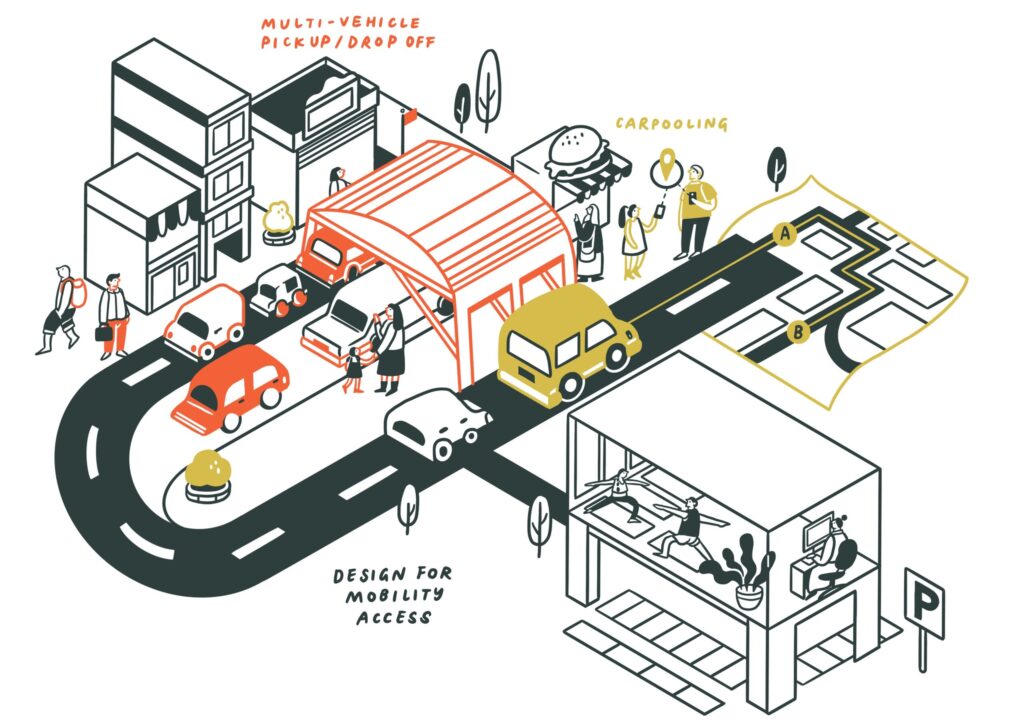Despite all the buzz surrounding automated vehicles (AV) in the past decade, one can argue that they are nothing more than a technical upgrades over existing system, and not a revolutionary new paradigm. In fact, the first driverless car concepts emerged as early as 1920s, ranging from the real-life ‘phantom autos’ to the fictional ‘Magic Highway’ imagined by Disney in 1958. AV technology has been languishing for many years, but recent innovations in ride-sharing platforms, 5G connectivity and electric vehicles may add a new push. These new technologies have the potential to coalesce and reinforce each other leading to a broader ‘technological shift in transportation’.
Challenge the Car-Dominance
The technological shift in transportation is especially relevant for urban designers because urban form and transport flows have a complex reciprocal relationship where changes in one have repercussions on the other. The invention of the private automobile and its widespread proliferation not only fundamentally changed how we move through the city, but the shape of the city itself, sprouting new development patterns and models. Eventually it locked us into a ‘system of automobility’ that we are now trying to dismantle through planning efforts such as transit-oriented development and the 15-minute city. The technological shift can be an opportunity to challenge car-dominance and establish more people-friendly and sustainable patterns of mobility.

Urban design and planning can be an effective instrument to steer the impacts of the technological shift, by influencing travel behaviour. Even as technological developments within their physical, social, economic and environmental contexts become increasingly uncertain, our design goals and intent remain relatively stable over time. Future research in urban design must chart out a path towards such a collectively defined preferred future, rather than presenting a single grand vision as an ode to the latest technology.
The conversation around AVs must shift from questions regarding how existing cars can be given a technical fix, or how existing public transport can be improved a bit, to what type of future city we want and how may the technological shift enable (or hinder) it.

For more information refer to the empirical study conducted in Singapore ETH Centre between 2017-2020.
Tanvi Maheshwari is the Associate Director at Future Cities Lab Global, Singapore-ETH Centre. Prior to this, she was a part of the Engaging Mobility Module at FCL as an urban design researcher. She investigated the impacts of vehicle automation and other technological disruptions in transportation on urban planning and design, in her PhD completed at Department of Architecture at ETH Zurich.

